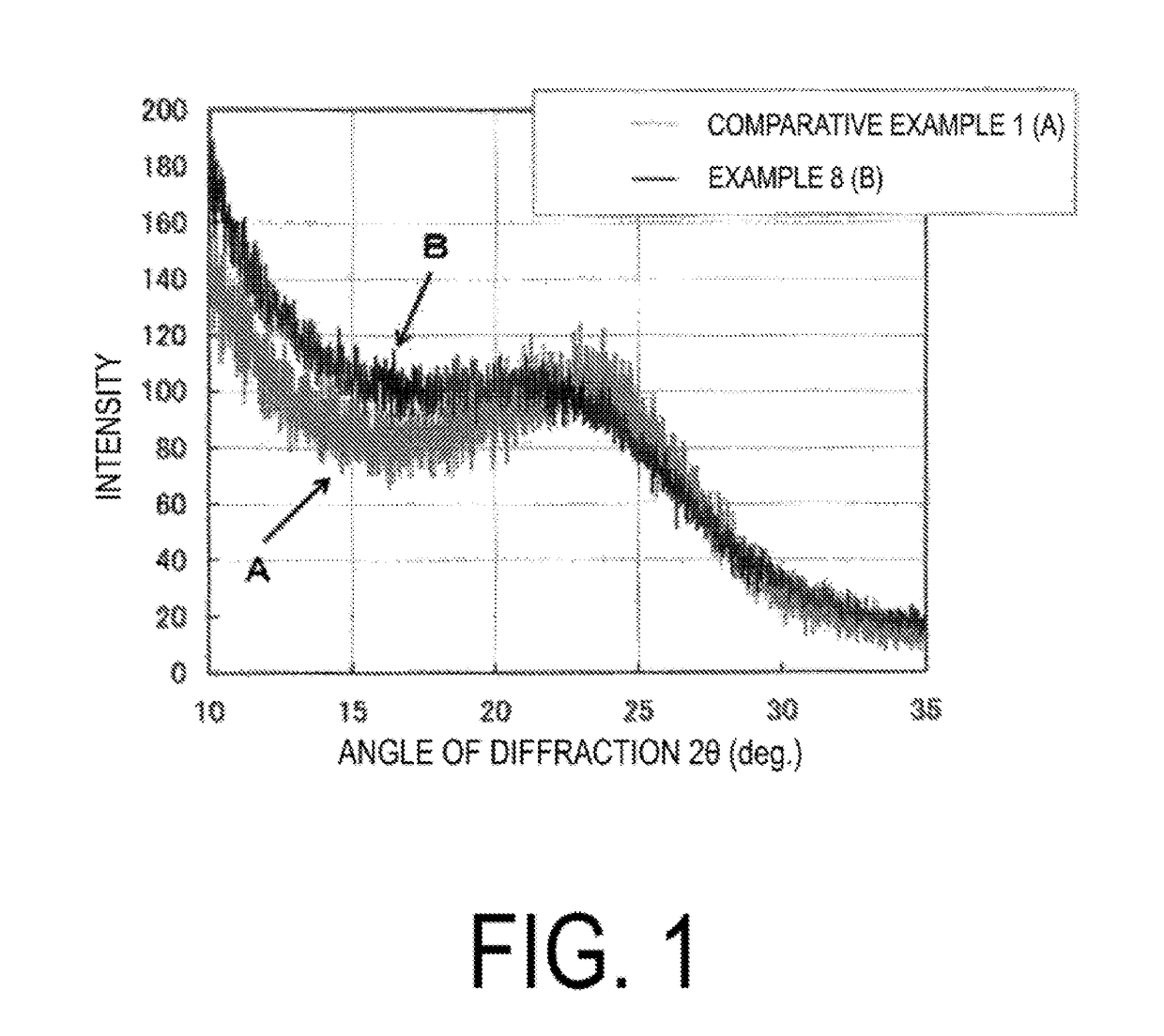Carbonaceous material for non-aqueous electrolyte secondary battery anode
a secondary battery anode, non-aqueous electrolyte technology, applied in the direction of batteries, cell components, electrochemical generators, etc., can solve the problems of graphite crystal breakdown, repeated increase and return of spacing, and theoretical limits, and achieve high energy density and high doping capacity
- Summary
- Abstract
- Description
- Claims
- Application Information
AI Technical Summary
Benefits of technology
Problems solved by technology
Method used
Image
Examples
example 1
[0153]First, 70 kg of a petroleum pitch with a softening point of 205° C., the atomic ratio H / C of 0.65 and a quinoline insoluble content of 0.4 wt. % and 30 kg of naphthalene were charged into a pressure-resistant container with an internal volume of 300 liters and having a stirring blade and an outlet nozzle, and the substances were melted and mixed while heating. After the heat-melted and mixed petroleum pitch was then cooled, the petroleum pitch was pulverized, and the obtained pulverized product was charged into water at 90 to 100° C., dispersed while stirring, and cooled to obtain a spherical pitch compact. After most of the water was removed by filtration, the naphthalene in the spherical pitch compact was extracted with n-hexane and removed. A porous spherical pitch obtained as described above was subjected to heating and oxidation while being passed through heated air, and heat-infusible porous spherical oxidized pitch was thus obtained. The oxygen content (degree of oxygen...
example 2
[0154]First, 70 kg of a petroleum pitch with a softening point of 205° C., the atomic ratio H / C of 0.65 and a quinoline insoluble content of 0.4 wt. % and 30 kg of naphthalene were charged into a pressure-resistant container with an internal volume of 300 liters and having a stirring blade and an outlet nozzle, and the substances were melted and mixed while heating. After the heat-melted and mixed petroleum pitch was then cooled, the petroleum pitch was pulverized, and the obtained pulverized product was charged into water at 90 to 100° C., dispersed while stirring, and cooled to obtain a spherical pitch compact. After most of the water was removed by filtration, the naphthalene in the spherical pitch compact was extracted with n-hexane and removed. A porous spherical pitch obtained as described above was subjected to heating and oxidation while being passed through heated air, and heat-infusible porous spherical oxidized pitch was thus obtained. The oxygen crosslinking degree of th...
example 3
[0155]A heat-treated carbon coated with pyrolytic carbon was obtained by repeating the operations of Example 1 with the exception that the oxygen content (degree of oxygen crosslinking) was set to 13 wt. % instead of 6 wt. %, that 7 wt. % of NaOH was added instead of 38 wt. % of Na2CO3, that alkali compound washing was not performed, and that the heat-treated carbon was coated with pyrolytic carbon at a temperature of 700° C. instead of 750° C. Next, 5 g of this heat-treated carbon was placed in a horizontal tubular furnace and subjected to reheating treatment for one hour at 1100° C. in a non-oxidizing gas atmosphere to prepare a carbonaceous material 3. Note that the average particle size of the obtained carbonaceous material was 20 μm.
PUM
 Login to View More
Login to View More Abstract
Description
Claims
Application Information
 Login to View More
Login to View More - R&D
- Intellectual Property
- Life Sciences
- Materials
- Tech Scout
- Unparalleled Data Quality
- Higher Quality Content
- 60% Fewer Hallucinations
Browse by: Latest US Patents, China's latest patents, Technical Efficacy Thesaurus, Application Domain, Technology Topic, Popular Technical Reports.
© 2025 PatSnap. All rights reserved.Legal|Privacy policy|Modern Slavery Act Transparency Statement|Sitemap|About US| Contact US: help@patsnap.com



